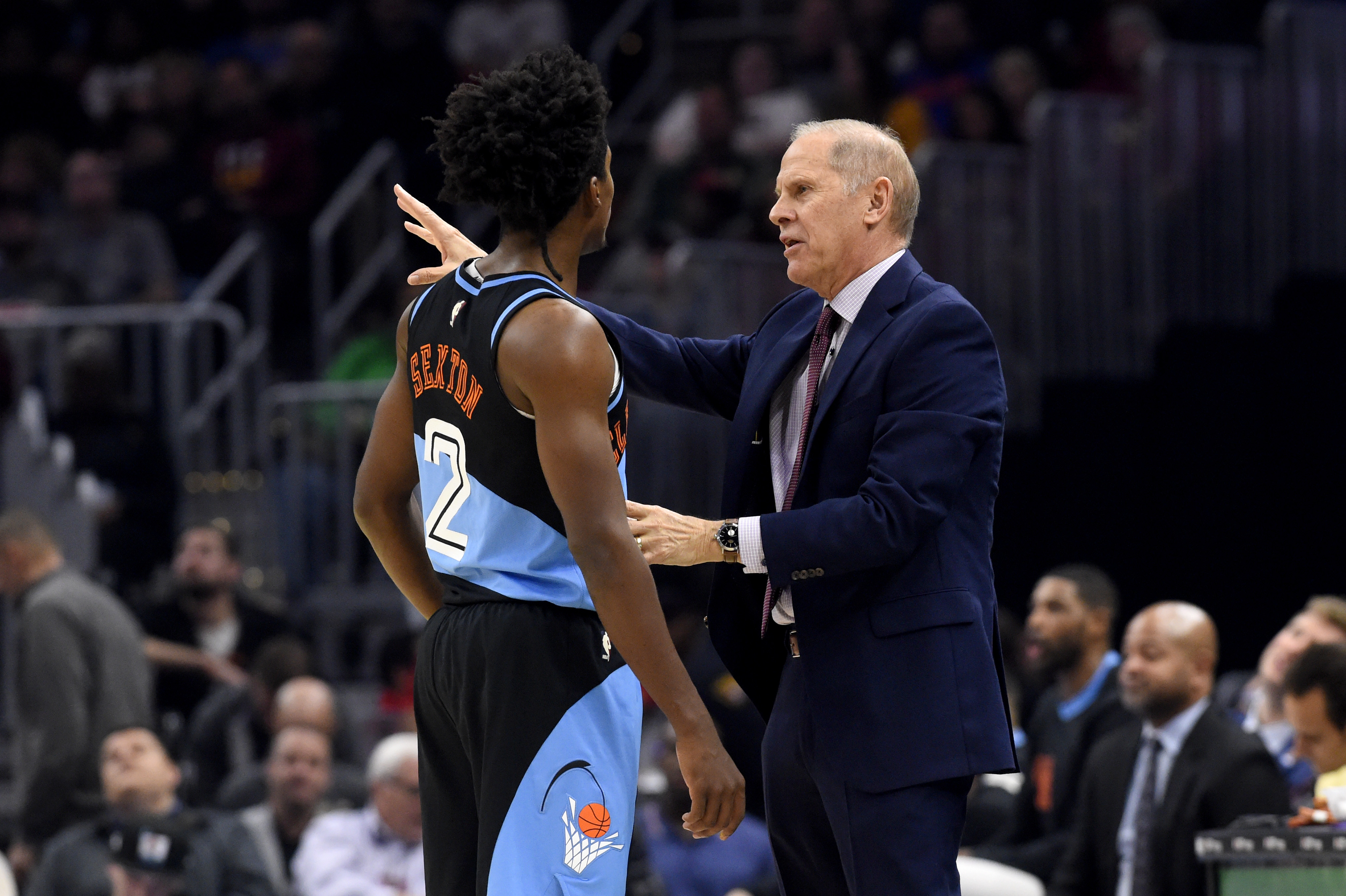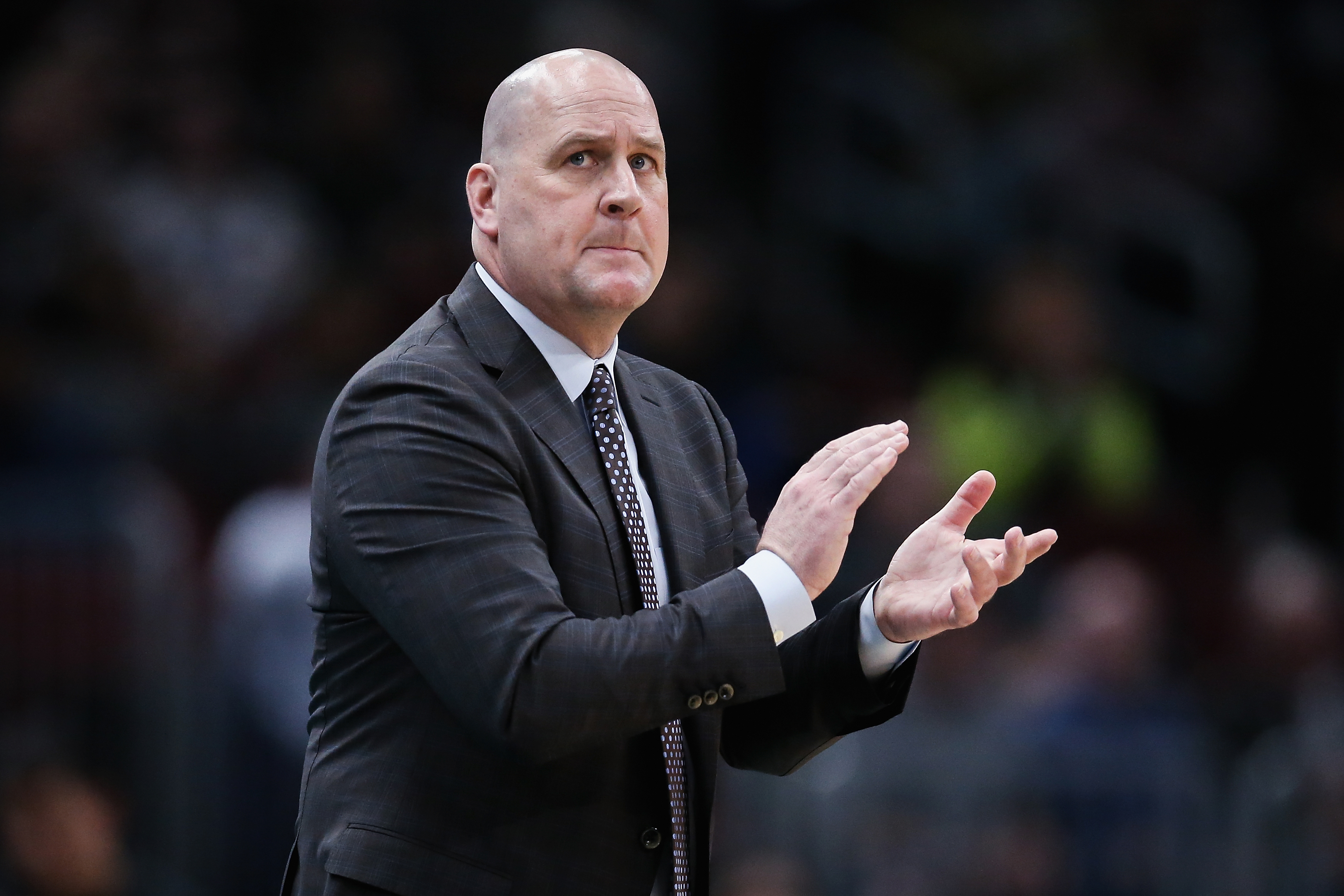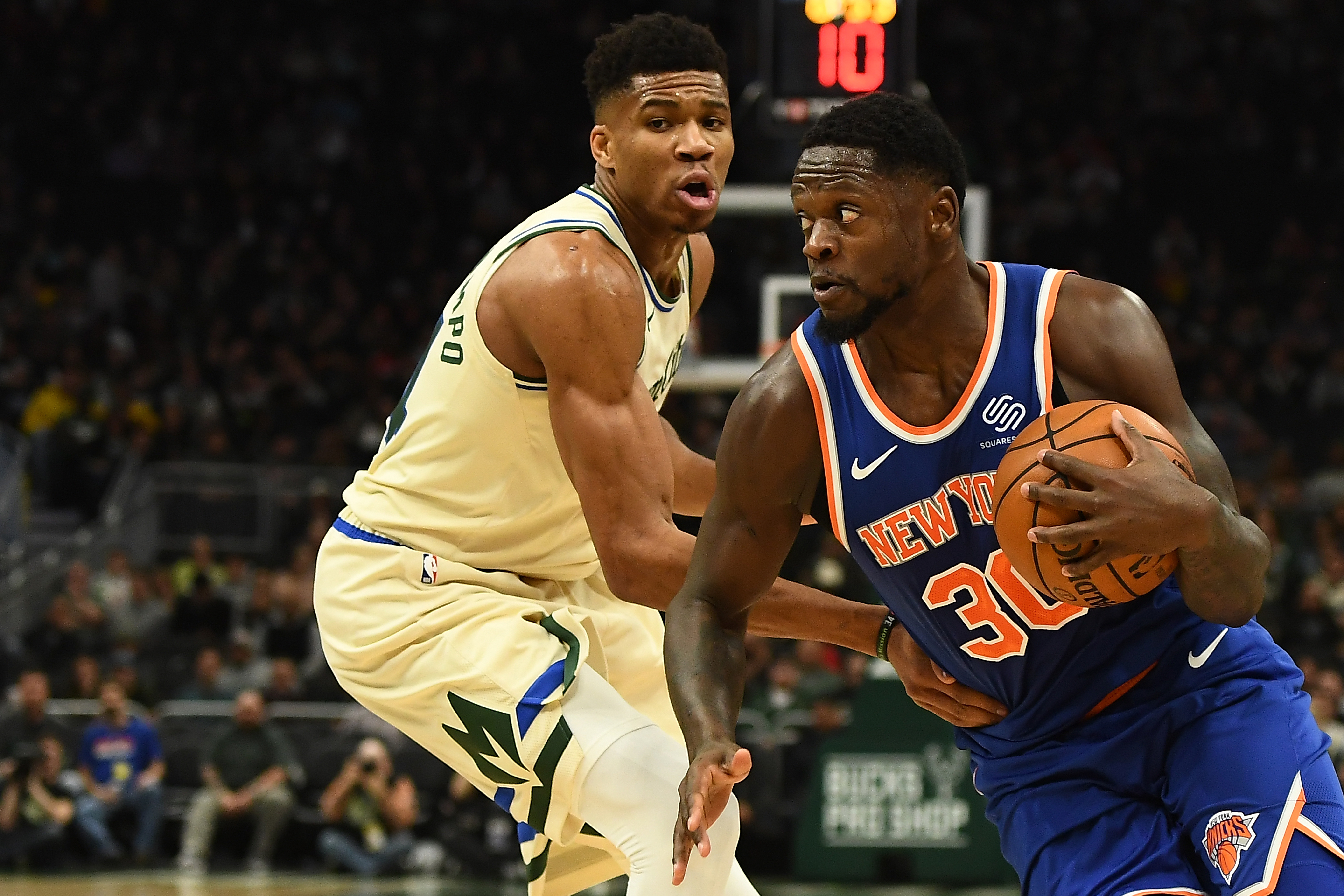ONE.
David Fizdale was the first coach fired this season, but as the trend is going, he won’t be the last. The NBA saw three in-season coaching changes in each of the last two seasons.
After Fizdale was relieved of his duties last Friday (and replaced by interim coach Mike Miller), the Knicks issued a statement over the weekend thanking Fizdale for his “leadership and professionalism” and added that he “represented the organization with nothing but class.”
Statements from the New York Knicks and David Fizdale. pic.twitter.com/5h7EevehlD
— NY_KnicksPR (@NY_KnicksPR) December 9, 2019
Fizdale last season oversaw a rebuilding year that focused on development and this season, after adding 7 free agents and 2 draft picks, the Knicks got off to a 4-18 start. There was a sense his position was tenuous after a 2-8 record, which led to an impromptu postgame appearance in front of the media by team president Steve Mills and general manager Scott Perry.
Coaching is all about results and with Fizdale out, who is the next NBA coach on the hot seat?
Let’s start with John Beilein, a rookie coach at the age of 66, in Cleveland. He left a very successful — and fairly secure — job at Michigan to take on the NBA. You’d think with how much his players loved him in college, he would fare well in the NBA, which is loaded with players that are of college-age.

But already there are complaints about his “college” approach to the pro level. In a report by The Athletic, the issues involve Beilein’s focus on teaching and criticism in film sessions. It’s reached a point, as one anonymous player said, “Guys drowned out his voice.”
It’s not even been two months!
Keep in mind, Beilein signed a five-year deal, so the Cavs may want to make roster changes rather than dump a coach 20+ games into his contract. But also keep an eye on assistant coach JB Bickerstaff, who, according to the report, has emerged as the coach the whining players are turning to as they tune out Beilein.
In Chicago, Jim Boylen’s blue-collar approach has been a bit weird (he put a punch-in timeclock at the team’s practice facility) and quite abrasive. He also a few weeks ago benched Zach LaVine, which turned into some mild controversy until LaVine responded exactly the way a coach would want: he’s been averaging 28 points per game and playing like the star they need him to be.

But the Bulls have won just 3 of the 8 games since that moment of truth and they go into this week with an 8-16 record. Boylen just signed a contract extension after he took over last season for Fred Hoiberg and the Bulls hierarchy likes him, so despite the struggles, it would be a surprise to see him go in-season.
The same goes for Alvin Gentry, who is an incredibly popular coach but yet, as we said with Fizdale, knows he is in a results-based business. Gentry does have some concerns about his future with the Pelicans after a 6-17 start and a recent 8 game losing streak.
To be fair, the Pelicans are playing without No. 1 pick Zion Williamson and have a weird roster after the Anthony Davis trade. David Griffin, who took over basketball operations earlier this year, gave Gentry a vote of confidence in the summer by picking up his $5 million option for 2020-21 season. Is it really on the coaching when you lose a superstar like Davis and don’t have your No. 1 pick available to play?

If there isn’t another change during the season, there’s one change that almost everyone is expecting at the end of the year: Mike D’Antoni out of Houston. He’s in the final year of his contract and, despite his success there it has been widely reported that he and GM Daryl Morey do not see eye-to-eye any longer. If the Rockets fall short of a title once again — and it’s hard to imagine that team, with James Harden playing the way he does, will challenge the best of the West — it will be easy for Morey and the Rockets to move on.
TWO.
Let’s talk more about coaching. So we have passed the first quarter of the season and this is a good time to review a new feature to the NBA that was introduced this season: the Coach’s Challenge. A coach is allowed to use a timeout to challenge a call on the court that involves a foul called on his own player, out-of-bounds or goaltending.
To no one’s surprise, the most challenges issued to date involve fouls. Through this past weekend, 169 fouls were challenged. 41% have been overturned. That’s actually higher than I expected, but then again, we’re always complaining about officiating and the referees are actually incredibly good at what they do (If you don’t agree, try watching a college basketball game).
It’s also worth noting that while more challenges are issued later in the game (51% of them come in the fourth quarter), it’s usually earlier in the game where you’ll see a call overturned. In the first quarter, there were 64% of fouls overturned and in the second quarter, there were 51% overturned. By the time we get to the fourth quarter, the referees are pretty sharp. The overturn rate for fouls in the fourth quarter is just 34%.
The new rule has received mixed reviews. Last week when the Celtics were playing the Knicks at the Garden, Julius Randle drew a blocking call on Celtics forward Grant Williams. Celtics coach Brad Stevens challenged the call and said Williams was outside of the restricted area and drew the charge. He believed it should be an offensive foul on Randle, who scored on the play.

After a review, the Replay Center agreed with Stevens that Williams should not have been called for a block. But they didn’t entirely agree. The foul on Williams was overturned, but Randle was not called for an offensive charge, either. So the basket counted.
Stevens was caught on camera yelling at referee Josh Tiven, “I’m done with these —– challenges! This is unbelievable.”
Naturally, you won’t hear too many coaches who like it, mainly because they believe the officials should just get the call correct. Most coaches feel like it puts more responsibility on them to challenge a call at the right moment and when you only have one, you have to make sure you use it wisely.
THREE.
Let’s give you a stat of the week for the NBA. This one is the alarming number of blowouts we’ve seen so far this season. In all games through this past weekend, there have been 32 games decided by 25 or more points, 15 decided by 30 or more points and SIX decided by 40 or more.
The biggest final score differential of the season so far was when the Clippers put a 49-point beatdown on the Hawks on Nov. 16. Over the last week, we saw the Knicks lose by 44 against the Bucks, the Pelicans lose by 46 against the Mavericks and the Cavaliers go down by 47 to the 76ers.

Last season, there were a total of 56 games decided by 30 or more points and only 7 decided by 40 or more. This season is barely a quarter old and there already have been six 40+ point defeats.
So why should this be a concern for the league? For starters, it suggests a massive gap between the haves and have-nots in a league that is often criticized for a lack of competitive balance. This season, coincidentally, may be the first time in many years that there isn’t one or two superteams in a league of also-rans. But there are still several teams at the bottom of the standings that are not even close and it’s showing on the scoreboard.
You can also add to the concern, from an entertainment value, that some teams are either completely giving up once a game gets out of hand or shooting themselves into deeper trouble. A 20 point lead evaporates quickly with the three-ball, but it can grow to 30 pretty fast if you start chucking-and-ducking to no avail. We’re also seeing the winning teams be more ruthless with their offense and continue racking up points.
In the old days, a team up by 25 or more might “take the air out of the ball”, as they used to say, and then go to the bench to rest the stars. But, again, with the three-point shot, no lead is safe. So you keep the pedal to the metal until the fourth quarter.
Blowouts are fun when the home team is rolling and the crowd is enjoying the show. The bench players get some shine in the second half and maybe one or two show something to catch the eye of their coach or an opposing scout.
But is it good for the game, and the league, to have so many blowouts?

